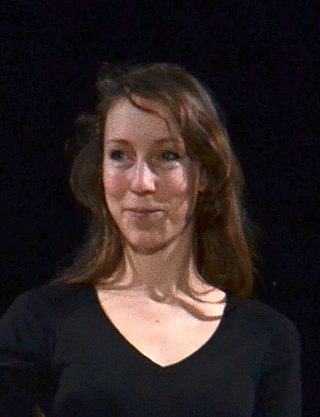
Moshe Safdie is an Israeli-Canadian-American architect, urban planner, educator, theorist, and author. He is known for incorporating principles of socially responsible design throughout the course of his six-decade career. His projects include cultural, educational, and civic institutions; neighborhoods and public parks; housing; mixed-use urban centers; airports; and master plans for existing communities and entirely new cities in the Americas, the Middle East, and Asia. Safdie is most identified with designing Marina Bay Sands and Jewel Changi Airport, as well as his debut project Habitat 67, which was originally conceived as his thesis at McGill University. He holds legal citizenship in Israel, Canada, and the United States.

Raymond Junichi Moriyama was a Canadian architect.

The Royal Canadian Academy of Arts (RCA) is a Canadian arts-related organization that was founded in 1880.
Abel Joseph "Jack" Diamond, was a South African-born Canadian architect. Diamond arrived in Canada in 1964 for the University of Toronto. In 1974, he established his architectural practice, A.J. Diamond Architects. This practice evolved into Diamond Schmitt Architects.
Ian Carr-Harris is a Canadian artist living in Toronto. In addition to exhibiting internationally, Carr-Harris is a professor at the Ontario College of Art and Design.
Barton Myers is an American architect and president of Barton Myers Associates Inc. in Santa Barbara, California. With a career spanning more than 40 years, Myers is a fellow of the American Institute of Architects and was a member of the Ontario Association of Architects while working in Canada earlier in his career.
Siamak Hariri, OAA, AAA, AIBC, FRAIC, RCA, Intl. Assoc. AIA is a Canadian architect and a founding partner of Hariri Pontarini Architects, a full-service architectural and interior design practice based in Toronto, Canada.

Shad Canada is an annual Canadian summer enrichment program for high-achieving high school students in July. The program is open to both Canadian and international students. The program is offered at 21 participating universities across Canada.
Teeple Architects is an architecture firm based in Toronto, Ontario founded by Stephen Teeple, in the year 1989. The firm is known to design several buildings in Canada, that focus on urban development, and sustainable design.
Hariri Pontarini Architects is a Toronto-based architectural practice founded by Siamak Hariri and David Pontarini.
KPMB is a Canadian architecture firm founded by Bruce Kuwabara, Thomas Payne, Marianne McKenna, and Shirley Blumberg, in 1987. It is headquartered in Toronto, where the majority of their work is found. Aside from designing buildings, the firm also works in interior design. KPMB Architects was officially renamed from Kuwabara Payne McKenna Blumberg Architects to KPMB Architects on February 12, 2013.

Iris van Herpen is a Dutch fashion designer known for fusing technology with traditional haute couture craftsmanship. Van Herpen opened her own label Iris van Herpen in 2007. In 2011, the Dutch designer became a guest-member of the Parisian Chambre Syndicale de la Haute Couture, part of the Fédération française de la couture. Since then, Van Herpen has continuously exhibited her new collections at Paris Fashion Week. Van Herpen's work has been included in the Metropolitan Museum of Art, the Victoria & Albert Museum, the Cooper-Hewitt Museum in New York and the Palais de Tokyo in Paris.
Marianne McKenna, OC, FRAIC, OAA, OAQ, AIA, RIBA is a Canadian architect and a founding partner of KPMB Architects, a Toronto-based practice established in 1987. She is an invested Officer of The Order of Canada "for her contributions as an architect, designing structures that enrich the public realm". Her projects include the renovation and expansion of The Royal Conservatory TELUS Centre for Performance and Learning and Koerner Hall. McKenna and KPMB were selected by The Brearley School, an independent all-girls school located in New York City, to lead the renovation of its building located on the Upper East Side. Her current projects also include for Banff Centre for Arts and Creativity in Banff, Alberta and an expansion and renovation of historic Massey Hall in Toronto In 2010 she was named one of Canada’s Top 100 Most Powerful Women and in 2014 she was named one of Toronto’s top 50 Powerful People by MacLean’s Magazine.
Shim-Sutcliffe Architects is a Canadian architectural design practice based in Toronto, Ontario.
Winka Dubbeldam is a Dutch architectural designer and academic. After her education in architectural design at Columbia University, she established her own firm, Archi-Tectonics, in 1994 in New York City. Her use of a combination of sustainable materials, innovative and inventive building methods with adoption of digital techniques has rewarded her with many accolades for her architectural projects. She has earned a reputation as a leading figure in modern architectural designs which has also made her "a real estate newsmaker". She is a Professor and Chair of architecture at the University of Pennsylvania. She is also the RIBA External Examiner for the Bartlett UCL London [2018-2022], the Creative Director for the Venice Biennale Virtual Italian Pavillion [2021]. Her Ted talk “Crowdfunding Urban Planning” was in TED Global in Edinburgh Scotland 2013.
Benjamin Brown was an architect in Toronto. He was born in what is now Lithuania and arrived in Toronto around 1896 with his family.

Elena Manferdini is an Italian architect based in Venice, California, where she is the principal and owner of Atelier Manferdini. She is the Graduate Programs Chair at the Southern California Institute of Architecture (SCI-Arc). She has over fifteen years of professional experience that span across architecture, art, design, and education.
Stephen Teeple, OAA, RAIC, RCA is a Canadian architect based in Toronto, Ontario. According to critic Ian Chodikoff, "He is known for his skill in producing work that is typified by strong linearity and expressive compositions containing a rich and highly detailed palette of materials such as brick, stone and wood". In 1989, Teeple founded the architecture firm Teeple Architects. Teeple's expertise encompasses residential, commercial, institutional, cultural and civic projects including community buildings such as recreational centers, museums and libraries.

Saucier + Perrotte Architectes is an architectural firm based in Montreal, Quebec. The firm was founded in 1988 by architects Gilles Saucier and André Perrotte, and is known for designing institutional, cultural and residential projects.
Hylozoic Ground is an interactive model of architecture which was presented in the Venice Biennale of 2010 and the 18th Biennale of Sydney in 2012. Hylozoic Ground is an exemplar of live architecture: it is an installation by Philip Beesley, who is a professor at the University of Waterloo.






